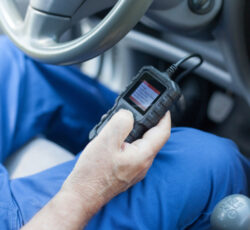A Guide to Understanding Different Check Engine Codes and What They Mean
 Modern cars are equipped with a variety of sensors that monitor different components of the vehicle and ensure they are running optimally. When a problem arises, these sensors trigger the check engine light on your dashboard and generate specific codes to help diagnose the issue. However, understanding these check engine codes can be a daunting task for many car owners. In this guide, we will explore the most common check engine codes and what they mean.
Modern cars are equipped with a variety of sensors that monitor different components of the vehicle and ensure they are running optimally. When a problem arises, these sensors trigger the check engine light on your dashboard and generate specific codes to help diagnose the issue. However, understanding these check engine codes can be a daunting task for many car owners. In this guide, we will explore the most common check engine codes and what they mean.
Code P0300: Random/Multiple Cylinder Misfire Detected
The P0300 code indicates that the engine’s computer has detected a random or multiple cylinder misfire. This means that multiple cylinders in your engine are not firing properly, leading to a rough idling or a noticeable decrease in performance. Possible causes for this code include faulty spark plugs, ignition coils, fuel injectors, or a problem with the engine’s compression.
Code P0171: System Too Lean (Bank 1)
The P0171 code indicates that the engine is running with too much air and too little fuel in bank 1 of the engine. This can occur due to a vacuum leak, a faulty mass airflow sensor, or a problem with the fuel system. A lean air-fuel mixture can cause rough idling, hesitation in acceleration, and poor fuel economy.
Code P0420: Catalyst System Efficiency Below Threshold (Bank 1)
The P0420 code generally indicates a problem with the catalytic converter in bank 1 of the engine. This code typically points to a catalyst system’s inefficiency, implying that the catalytic converter is not reducing emissions as effectively as it should. Possible causes for this code include a faulty oxygen sensor, a damaged catalytic converter, or an exhaust leak.
Code P0442: Evaporative Emission System Leak Detected (small leak)
The P0442 code indicates a small leak in the evaporative emission system of the vehicle. The evaporative emission system prevents harmful fuel vapors from escaping into the atmosphere. A small leak can occur due to a loose or faulty gas cap, a cracked or disconnected purge valve hose, or a leak in the fuel tank or associated components. While this code does not typically affect the drivability of the vehicle, it is essential to address it to prevent further damage to the environment.
Code P0401: Exhaust Gas Recirculation (EGR) Flow Insufficient
The P0401 code indicates that there is insufficient flow detected in the exhaust gas recirculation (EGR) system. The EGR system helps reduce nitrogen oxide emissions by recirculating a portion of the exhaust gases back into the engine combustion chambers. A clogged or malfunctioning EGR valve, carbon buildup in the EGR system, or a faulty EGR sensor can all cause this code. Symptoms may include rough idling, poor acceleration, and increased fuel consumption.
Conclusion
Understanding the various check engine codes your car’s computer generates can provide valuable insight into potential issues with your vehicle. While these codes can seem complicated, they serve as an essential starting point for diagnosing problems and preventing further damage. If you encounter a check engine light, it is best to consult a professional mechanic or use a diagnostic tool to read the codes accurately. Remember, timely identification and resolution of these issues can help keep your car running smoothly and avoid costly repairs in the future.
